Pharmacopoeia – Creating Sparks Science Festival 2000
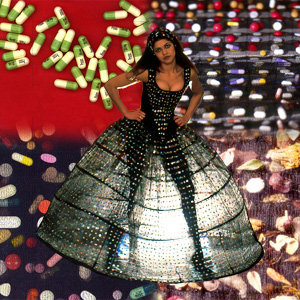 The first major showing of Pharmacopoeia was at the Royal College of Art as part of the British Association for the Advancement of Science Festival ‘Creating Sparks’
The first major showing of Pharmacopoeia was at the Royal College of Art as part of the British Association for the Advancement of Science Festival ‘Creating Sparks’
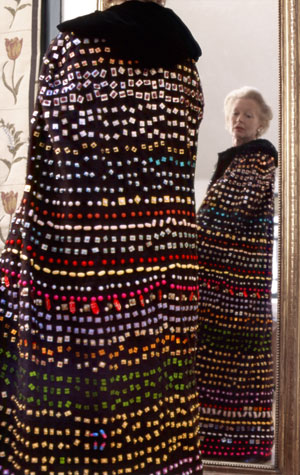
When I was at medical school one of my fellow students said to a rather grand surgeon with eight children “Congratulations sir, I hear your wife has had a period”. We thought it was very funny at the time although the consultant apparently didn’t.
Women in the developed world now menstruate many more times than they ever have before. We can expect to have about 400 periods in our lifetime whereas women born in the mid-nineteenth century had about 200. There are several reasons for this. The first is that with better health and nutrition the average age for the onset of menstruation has gradually dropped over the last 150 years from 16 to 13. But more significant are the changes to our patterns of childbearing and breast feeding. Breast feeding inhibits ovulation in most women and so each child born and breast fed for 6 months may prevent about 20 periods. The huge reduction in average family size has thus led to a significant rise in the total number of periods.
As well as the obvious day to day advantages to having fewer periods there are also a number of highly significant medical ones. It has been argued by the contraceptive researchers Couthinho and Segal that the ‘incessant ovulation’ that we now experience is detrimental to our health. Studies show that up to a third of women report heavy periods and slightly more suffer significant pain each month. Premenstrual bloating, breast tenderness, headaches and irritability cause significant morbidity and anaemia as a result of menstruation and is one of the commonest causes of chronic ill health in the world. But perhaps most worrying of all is that an increase in both ovarian and endometrial cancer is linked to ovulation. The more we ovulate the more likely we are to develop one of these malignancies because ovulation causes an increase in cell division in the womb and the ovary.
Few women manage to get through their 400 periods without consulting a doctor at some time. Most problems occur towards the beginning and the end of our fertile years. After the onset of menstruation our ovaries sometimes take a year or two to get into their stride resulting in the erratic ovulation and chaotic periods that are often heavy and painful. Aspirin, paracetamol and neurofen all help the pain, but the only help for the unpredictable bleeding patterns is to put girls on the pill. For many people the pill equals licence to have sex but for me it equals licence not to have horrible periods. If an eleven year old is in trouble with her periods she should not be denied the pill because of this spurious connection.
The pill was developed as a method of family planning and its other uses have always been of secondary importance to the drug companies. It’s introduction a s a contraceptive in the early 1960’s was a major political event. In the hope of getting accepted as a ‘natural method of family planning’ (thus available to the catholic populations of the world) it was formulated in such a way as to give a monthly bleed that mimicked a woman’s normal menstrual cycle. Although the Catholic church was never convinced by this argument the monthly bleed has been retained when in fact there is no medical reason for such long and regular bleeding. OK, so women like to be reassured that they are not pregnant. But give me the choice between a home pregnancy test once a month or a five day bleed and I know which I will choose.
For many years women have been sorting this problem out for themselves. Most pill takers run packets together over the holidays, exams and special celebrations in order to avoid a period. This is fine for three months at a time but there is a sound medical reason to continue to shed the lining of the womb periodically. If this is not done the risk of endometrial cancer rises.
It is getting the balance that is important. Finally the drug companies have realised how debilitating five days of bleeding every month can be and a new pill is in development. Rather than have a seven day break between packets it will have only three days. Bleeding time will be halved without increasing the cancer risk.
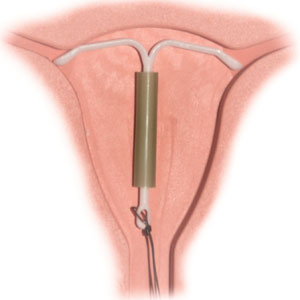
As women approach the menopause their periods often become erratic and heavy as ovulation again becomes sporadic. the most significant recent addition to our vast armoury of medical treatments for these women is not a pill but a coil. The Mirena coil introduced in 1995 is an interuterine contraceptive ‘system’ containing a reservoir of the hormone progesterone which is leaked out in small amounts that are just enough to inhibit the growth of the lining of the womb. Over a period of six months it gradually reduces and then stops the monthly bleed as there is no lining present to be shed. In my own practice the benefits of the Mirena are now becoming apparent as referrals for hysterectomy have dropped by ten percent.
A year ago Sandra Fellows came to see me demanding a referral for a hysterectomy saying ‘I just want it all taken away’. She was pale and exhausted by her frequent heavy periods which confined her to the house for up to three days a month. We talked about the Mirena and she reluctantly agreed to try it on the understanding that I refer her to a gynaecologist if it didn’t work. One year later she is happy with her decision. Although slightly troubled with some irregular bleeding in the first four months she has now completely stopped bleeding. Compared to a hysterectomy with all the attendant risks of major surgery followed by three months convalescence the Mirena is a safe and effective treatment. Provided all goes well she can anticipate very few more periods during her fertile life.
In future years I think those of us who would like to be congratulated for having the occasional period without the trouble of having eight children will be using the pill and the Mirena strategically throughout our fertile lifetimes. We will indeed be more like our great great grandmothers.
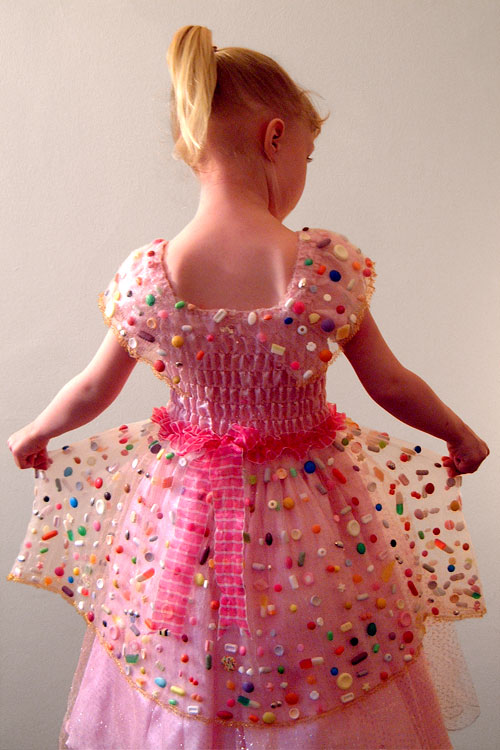 Pills are made to look like sweets in order to encourage us to take them and sometimes they can be virtually indistinguishable from each other. For example Ibuprofen looks very much like a smartie. This is perhaps not surprising as it’s pink sugary coating has been added specifically to ‘sweeten the pill’.
Pills are made to look like sweets in order to encourage us to take them and sometimes they can be virtually indistinguishable from each other. For example Ibuprofen looks very much like a smartie. This is perhaps not surprising as it’s pink sugary coating has been added specifically to ‘sweeten the pill’.
Children overdose on all kinds of drugs. They can be at risk when visiting elderly relatives who keep their tablets beside the bed or on a kitchen shelf.
The more ubiquitous and appealing a drug the more likely children are to accidentally overdose on it and the most common culprit is paracetamol elixir or calpol. This pink syrup can be found in almost all homes with a child under the age of six, and is so familiar that people forget to treat it as a medicine, leaving bottles within easy reach of inquisitive children.
Go to the new version of this piece ‘Gretel’, made for BBC Horizon in 2009.
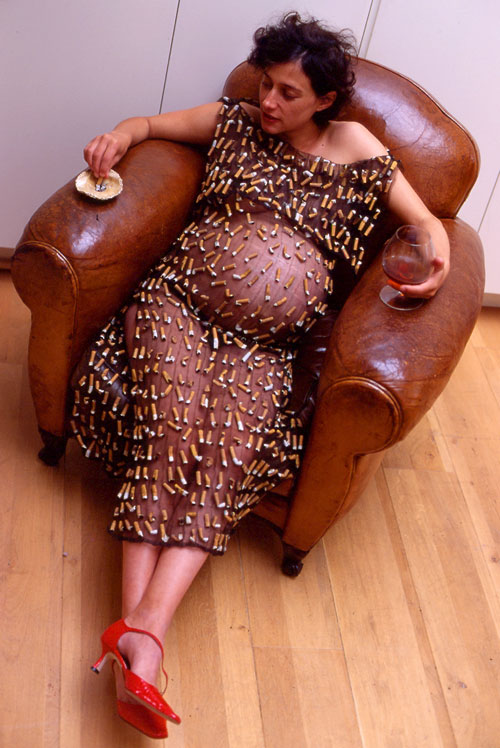 Pocket knitted dress containing 840 cigarette butts—a packet a week for an average pregnancy.
Pocket knitted dress containing 840 cigarette butts—a packet a week for an average pregnancy.
If you carry on smoking during pregnancy you are more likely to suffer complications while you are pregnant. Although small, there is a greater risk of having a miscarriage, bleeding, your waters breaking early – which can lead to the baby being born with an infection, your baby being born prematurely, giving birth to a still born child or your baby dying soon after it’s born.
On average a smoker’s baby will weigh 8oz (220g) less than a non-smoker’s. This may be because cigarette smoke reduces the amount of oxygen that the baby gets through the umbilical cord.
The following chemicals also pass into a baby’s blood-stream:
Photo: Chloe Stewart
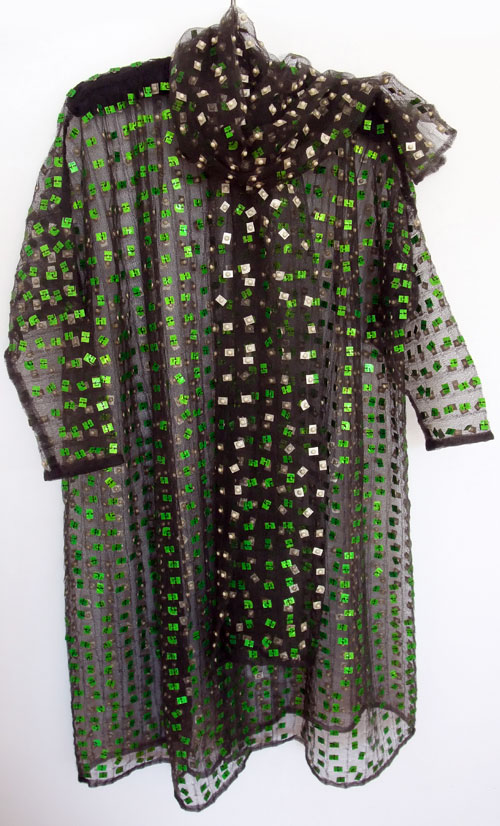 Microgynon, with its distinctive emerald and gold packaging, is one of the most popular contraceptive pills in the UK.
Microgynon, with its distinctive emerald and gold packaging, is one of the most popular contraceptive pills in the UK.
The Pill is not just prescribed as a contraceptive but also for painful, heavy, continuous or irregular periods and for premenstrual tension.
This coat and shawl contain enough pills to provide contraception for nine years.
 “We see a lot of people in surgery who are unhappy. One of the difficulties in general practice is deciding which of them have a clinical depression that may benefit from drug treatment as well as talking treatments such as psychotherapy, counselling or other forms of psychological support.
“We see a lot of people in surgery who are unhappy. One of the difficulties in general practice is deciding which of them have a clinical depression that may benefit from drug treatment as well as talking treatments such as psychotherapy, counselling or other forms of psychological support.
“From listening to Steve talking about his experience of clinical depression it becomes clear that this is very different from ordinary unhappiness.”
Dr Liz Lee
 “In responding to Liz Lee’s prompting on the general subject of depression, I immediately thought of my own down-times and how I might be able to relate to this subject as an artist. As ever, the things closest to one’s own experience and readily to hand became the metaphors for this most difficult to pin down illness. Collaboration and feedback from people close to me, and relating to places I know formed the backdrop for the patient / doctor discussion between Steve and Liz which we recorded and you as a viewer can share.”
“In responding to Liz Lee’s prompting on the general subject of depression, I immediately thought of my own down-times and how I might be able to relate to this subject as an artist. As ever, the things closest to one’s own experience and readily to hand became the metaphors for this most difficult to pin down illness. Collaboration and feedback from people close to me, and relating to places I know formed the backdrop for the patient / doctor discussion between Steve and Liz which we recorded and you as a viewer can share.”
David Critchley
www.critchley.net
A grommet fitted into the eardrum to improve hearing in children, a replacement intra-ocular lens fitted during a cateract extraction and a Blom-Singer valve, which gives speech after a laryngectomy. All three of these have been used and removed.
 When a doctor prescribes a medicine they write the generic name on the prescription form. The chemist makes the choice of which brand to give the patient. With repeat prescriptions, the pills recieved may look different. For example in this piece all sixteen tablets and capsules are the same drug – diclofenac. This is prescribed mainly to the elderly as a treatment for arthritis in conjunction with up to a dozen other pills a day. A change in appearance can only add to any confusion.
When a doctor prescribes a medicine they write the generic name on the prescription form. The chemist makes the choice of which brand to give the patient. With repeat prescriptions, the pills recieved may look different. For example in this piece all sixteen tablets and capsules are the same drug – diclofenac. This is prescribed mainly to the elderly as a treatment for arthritis in conjunction with up to a dozen other pills a day. A change in appearance can only add to any confusion.
 It has been estimated that, on average, each of us takes one course of antibiotics each year, 70% of which are amoxycillin.
It has been estimated that, on average, each of us takes one course of antibiotics each year, 70% of which are amoxycillin.
Since the use of antibiotics became widespread in the second half of the twentieth century many bacteria have become resistant to them. The more antibiotics we prescribe the more resistance develops and there are now major and justified concerns about the overuse of antibiotics. GP’s prescribe 80% of all antibiotics in the UK and therefore control of antibiotic resistance depends greatly on rational prescribing by these doctors.
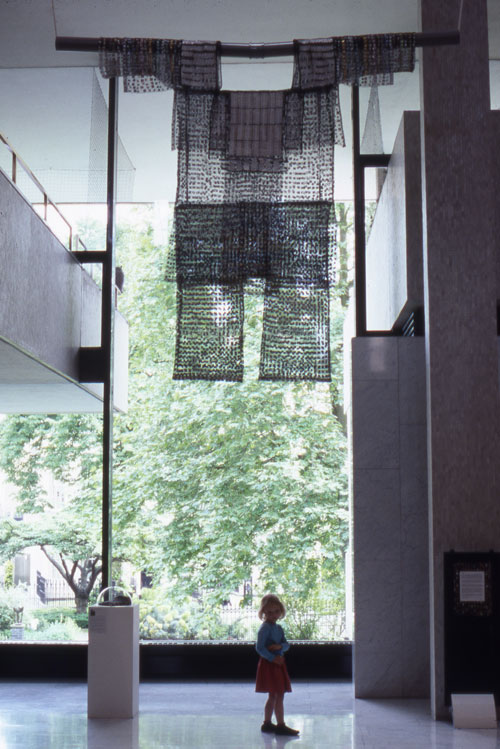 Made in 2000 for the Pharmacopoeia UK tour and subsequently shown in Scandinavia, Armour was recently purchased by the Royal College of General Practitioners where it is on permanent display in their headquarters on Euston Road.
Made in 2000 for the Pharmacopoeia UK tour and subsequently shown in Scandinavia, Armour was recently purchased by the Royal College of General Practitioners where it is on permanent display in their headquarters on Euston Road.
Armour was based on Liz Lee’s elderly patient Mr Brittain who suffered from emphysema, hypertension, heart failure, arthritis, indigestion and insomnia. Until the age of 50 he was relatively healthy but he did smoke. The smoking gradually destroyed the fabric of his lungs causing emphysema. It also contributed to the two heart attacks that together with his high blood pressure resulted in heart failure. He spent his last years sitting in his armchair breathing oxygen through a mask. Often in pain he could no-longer go out and had difficulty walking around his flat.
From his medical record we calculated all the oral prescription drugs he took between the age of 72 and 77 and sourced related empty pill packs. The resulting foil packaging scultpure represents the tough outer shell many people have to adopt in order to endure the suffering caused by the chronic diseases so common in old age.
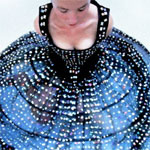
Pharmacopoeia is an exhibition resulting from a 3-year collaboration between Susie Freeman, a textile artist working in London, and Dr Liz Lee, a general practitioner in Bristol, UK. Their work focuses on common medical conditions, with the objective of stimulating thought about the realities of health-care choices. “We particularly want to engage the imagination of people who have little confidence when dealing with doctors, and help them make decisions about their own medical treatment,” explains Freeman…
Full article available on The Lancet website (free, but requires registration)
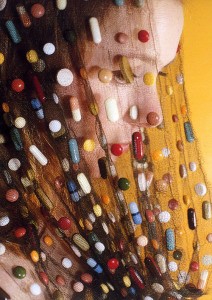
There can hardly be anything more stimulating than the birth of a new art form, but here we have it. Moreover, how fitting it is that the works are displayed at an exhibition at Contemporary Applied Arts. If the powerful pieces displayed in Pharmacopoeia are not contemporary and applied, what are they?
Art and medicine have long been related. Florentine artists in the fourteenth century were so fascinated by the human body that they became dissectors of bodies at the University. Leonardo Da Vinci almost certainly dissected the bodies he portrayed in his series showing detailed human anatomy (inside and out) a hundred years later. But leaving aside dissection (and the tradition still continues with the recent controversial work of Anthony Noel Kelly), artists have depicted disease as in the famous gouty knee by Raphael in the early 1500s and the pictures of madness by Goya. Applied art too is part of medicine, as art and design are used both to sell medicines in promotional material, and in their product design – surely an artist had a hand in Viagra’s diamond shaped blueness.
The politicisation of medicines is also not new. The concept of political prescribing certainly surfaced in London in the late 1980s. Gradually it was realised that women were being given sleeping pills and sedatives, not because they were ill, but because it offered doctors (and society in general) an easy way of dealing with poverty, noisy neighbours, damp walls and domestic violence.
Pharmacopoeia takes on a new dimension. Here, with beauty, skill an insight, are explicit contemporary commentaries about our relationship with medicines and with treatments generally. The works bring home the enormity of our reliance on drugs, coupled with the power of mechanical help as provided by interuterine contraceptive devices and prostheses such as hip replacements. It also illustrates how wasteful our relationship can be as medicines are unused or abused. With this exhibition, Medico-Political Art is born.
Congratulations to the parents, Susie Freeman and Liz Lee, and to the Wellcome Trust, who through their Sci~Art award revealed their skills in midwifery.
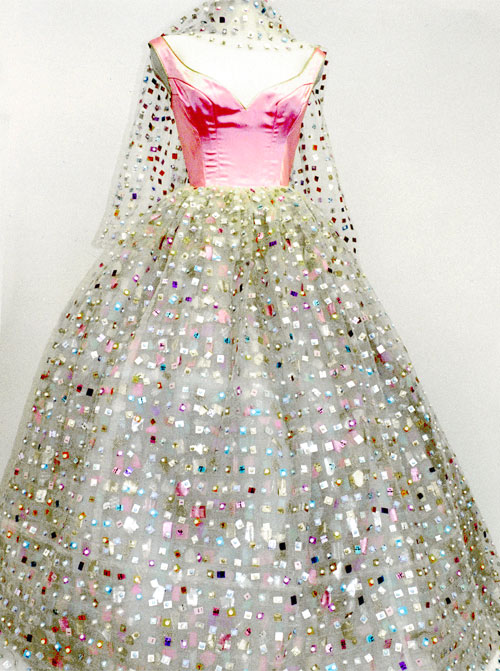
Armour and Jubilee were bought by The Royal College of General Practitioners in 2011 and are on public display in their central London headquarters next to Euston Station.
Jubilee is a wedding dress made of 80 denier nylon monofilament hand knitted on a Dubied industrial knitting machine. Enclosed in rows of tiny mesh pockets are 6,279 contraceptive pills. Allowing for a couple of breaks to have children this would provide contraception for a woman from the age of 22 to 50 years old.
Originally made in 2000 for the exhibition ‘Sexwise’, focusing on women’s health, Jubilee toured the UK from 2001 to 2003 and was part of Welcome Trust’s Medicine and Art exhibition in Tokyo 2010.

Ball gown incorporating the estimated 5,500 pills that would be needed to provide the equivalent 22 years of contraception provided by the Lippes Loop coil, which was fitted in a school cook following the birth of her fourth child and provided contraception until her menopause.
Photo: Neil Wilder
 “Susie and I have been friends for 40 years and as women do we have had an ongoing conversation about periods, contraception and conception. ‘Under Wraps’ illustrates the menstrual narrative from menarche to menopause.”
“Susie and I have been friends for 40 years and as women do we have had an ongoing conversation about periods, contraception and conception. ‘Under Wraps’ illustrates the menstrual narrative from menarche to menopause.”
Dr Liz Lee
| Alternatives | Devil’s Claw |
| Contraceptives | Mercilon, Microgynon, Logynon, Cileste, Organon |
| Heavy Bleeding | Mefanamic Acid, Tranexamic Acid |
| Hormone Replacement Therapy | Prempack, Nuvelle, Tridestra, Progynova |
| Morning After Pill | Schering PC4 |
| Pain | Ibuprofen, Paracetamol, Coproxamol |
| POP Contraceptives | Loestrin, Neogest, Norimin |
| Thrush | Sopranox |
| Vitamins and Minerals | Premence, Iron, Primulot, B6 |
 Complementary therapies are increasingly popular. Some of these leaves, roots and seeds form the basis for both conventional and alternative medicines.
Complementary therapies are increasingly popular. Some of these leaves, roots and seeds form the basis for both conventional and alternative medicines.
|
|
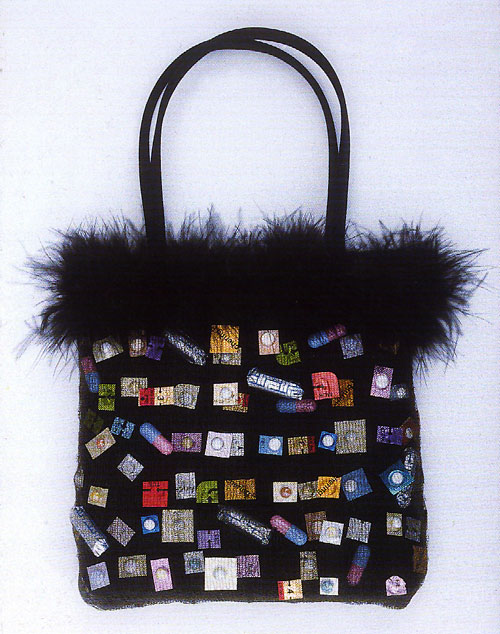 Decorated with varieties of the pill, condoms, pessaries and the morning after pill.
Decorated with varieties of the pill, condoms, pessaries and the morning after pill.
This handbag was made for the exhibition ‘Sexwise’, a collaboration between Pharmacopoeia, Nottingham Castle Museum & Art Gallery and the Health Authority in Nottingham, which focused on teenage pregnancy.
“An important part of the project involved the teenagers themselves making a video about the reality of teenage pregnancy. They were obviously enthusiastic, they learnt a lot through participating in that project and their experience has undoubtedly influenced them. Sexwise also worked brilliantly with the schools. We use the project as a model of good practice for health promotion in schools.”
Jocelyn Dodd
An artificial hip removed from a patient who had osteoarthritis is shown beside the estimated total number of pills they would have taken in lieu of having a prosthesis fitted.
One for the Road was shown in the context of other works and medical objects as part of Schmerz (Pain) in 2007 at the Hamburger Bahnhof – Museum der Gegenwart – Berlin:
“The exhibition PAIN traces the many expressions of pain: a picture of the crucifixion, the preserved specimen of a gouty hand, a video installation showing mourners, the flickering electric impulses of a nerve cell, a scream. Combining and confronting art works and objects from the realms of medicine, ethnology, religion and everyday usage, this exhibition ventures to make an expedition along the borderlines of art and medicine. It is intended as a laboratory for new visual and contextual impulses from the different spheres of imagery and objects, and is shown simultaneously in the Hamburger Bahnhof – Museum der Gegenwart – Berlin and in the Medizinhistorisches Museum (Museum of the History of Medicine) at the Charité, Berlin’s main hospital”
 “I came across Mr Minckton’s pile of unopened pills on a home visit. I asked him if he would like me to take them away. It made me realise how wasteful some of our prescribing habits can be. In fact nearly everyone has a quantity of unused drugs in their medicine cabinet”
“I came across Mr Minckton’s pile of unopened pills on a home visit. I asked him if he would like me to take them away. It made me realise how wasteful some of our prescribing habits can be. In fact nearly everyone has a quantity of unused drugs in their medicine cabinet”
Dr Liz Lee
 Clippy Story
Clippy StoryIn 1978 Joyce Adams was 58 and working as a bus conductor. One lunchtime as she jumped down from her bus to get a sandwich for her driver she fell and fractured her hip. This is called a fractured neck of femur (the femur is the long bone of the thigh). Treatment is an operation to remove the fractured end of the bone which forms part of the hip joint and replace it with an artificial hip joint.
Joyce walked around on her artificial hip for twenty years. It eventually started to become painful as its shaft worked loose where it was cemented into the femur. This necessitated a second operation to replace the artificial hip with a new one and this was performed in Southmead Hospital, Bristol.
Mrs. Adams is now walking around comfortably on her new hip and she gave us permission to use the old one in Hip Hip, permanently on display in the hospital’s out-patient department. Hip Hip enables patients awaiting a hip operation to see what an artificial joint looks like after twenty years of wear. This is contrasted with pills taken for arthritis which, apart from fractured hips is the main reason for patients to have a hip replacement. Patients are understandably very interested in the work as it directly relates to their own experience of illness.
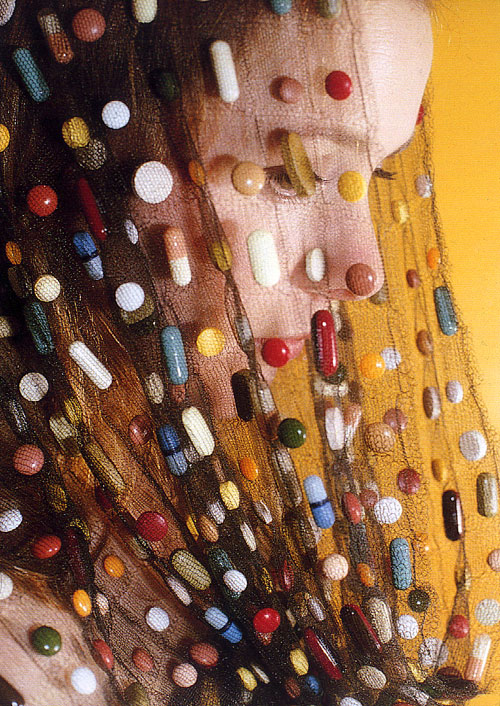 Easily available vitamins and minerals may look very similar to more dangerous prescription-only drugs.
Easily available vitamins and minerals may look very similar to more dangerous prescription-only drugs.
Photo: Chloe Stewart
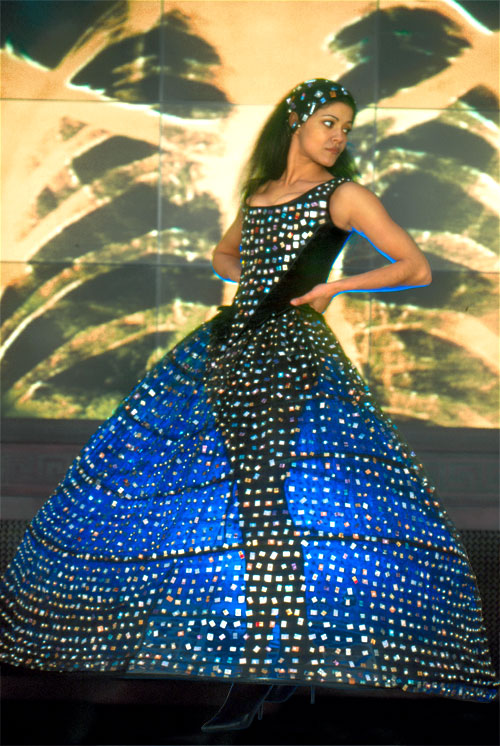 “Come Dancing is a dramatic ball gown decorated with over 6,000 multicoloured, foil covered oral contraceptives trapped in tiny net pockets, rather than appliquéd with sequins. At the waist, where a jewel clasp would be more appropriate, is a Lippes Loop, removed from a teacher for whom it had provided intrauterine contraception for 26 years, an equivalent period to that provided by the gown’s thousands of pills.
“Come Dancing is a dramatic ball gown decorated with over 6,000 multicoloured, foil covered oral contraceptives trapped in tiny net pockets, rather than appliquéd with sequins. At the waist, where a jewel clasp would be more appropriate, is a Lippes Loop, removed from a teacher for whom it had provided intrauterine contraception for 26 years, an equivalent period to that provided by the gown’s thousands of pills.
“The work resulted from consultations with patients about contraception, during which Dr Lee observed that, despite lacking a visual image of an interuterine contraceptive device, many women had such strong emotional feelings about the coil that they were unable to discuss its use rationally. In contrast, women choosing oral contraception were unlikely to realise the quantity of pills they would have to take over many years. By showing a Lippes Loop alongside the number of pills required to provide equivalent contraception, Come Dancing neatly reveals two previously hidden pieces of information, and helps to inform women about their preferred contraceptive method.”
Colin Martin, The Lancet
Photo: The Wellcome Trust